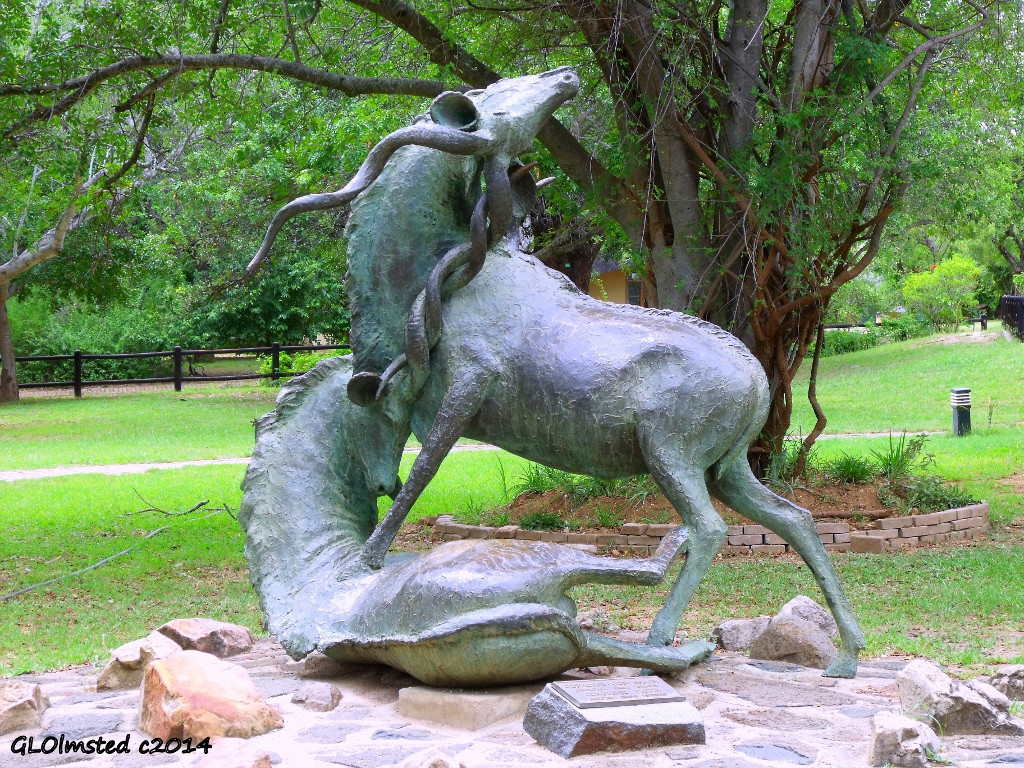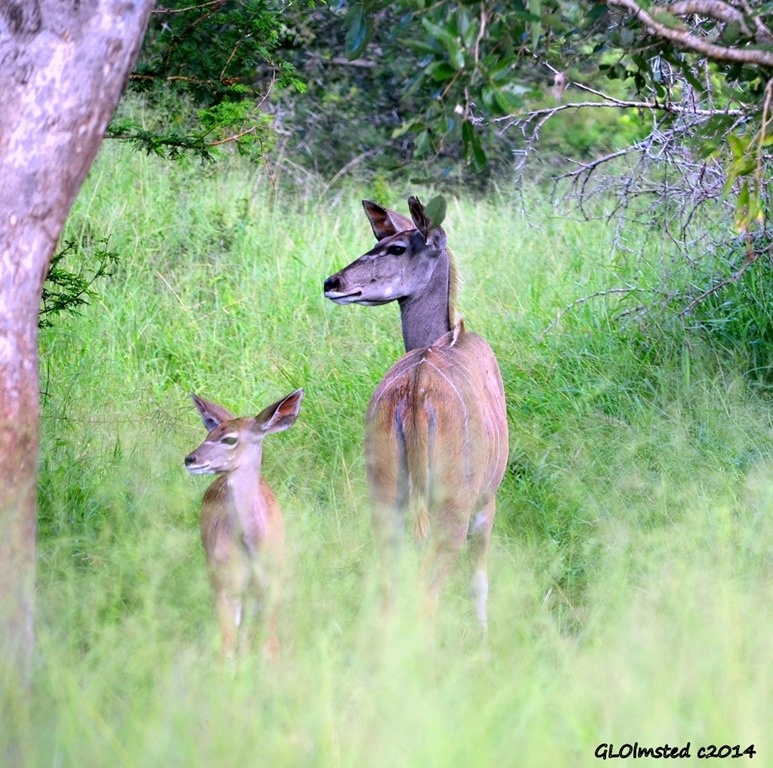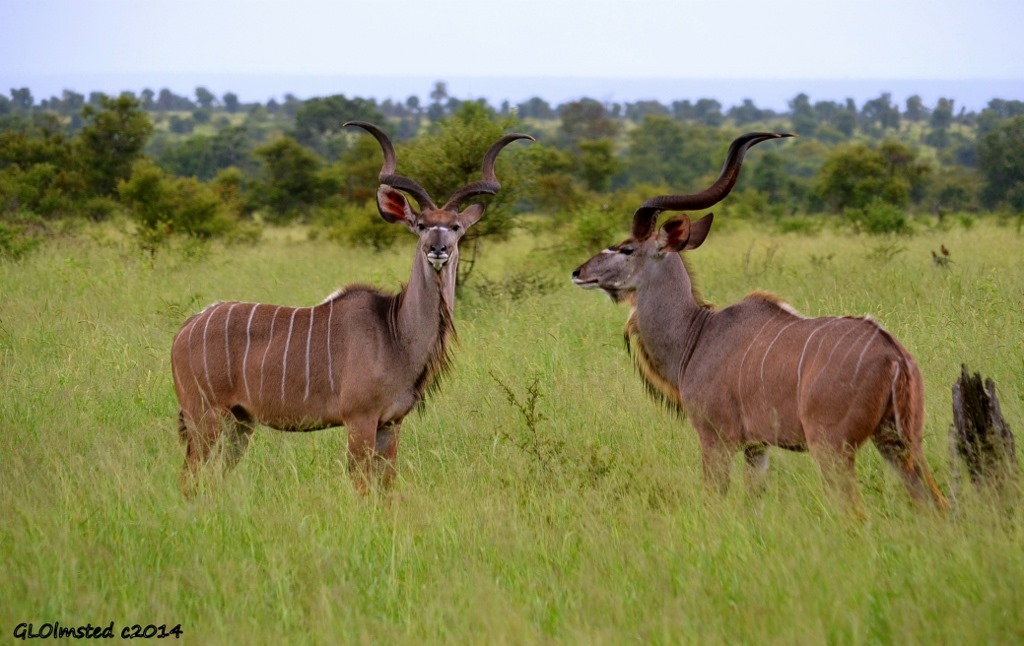Kudu are a species of antelope found in the savannas near thickets where they browse on leaves and shoots.
A pregnant female leaves the herd to give birth then hides the newborn for 4-5 weeks returning only to nurse it. When the calf is 3-4 months old it will stay with the mother constantly and at about 6 months returns permanently to the group.
Only males have horns and are found in bachelor groups or more often solitary. During displays of dominance they lock horns and have been known to get stuck causing death by starvation.
 Statue of locked Kudu at Skukuza Kruger National Park
Statue of locked Kudu at Skukuza Kruger National Park
Predatory threats come from big cats, wild dogs, hyenas and primarily humans for their meat, hides and horns. The meat tastes similar to venison and is very lean.



I love Kudu they are magnificent beasts. I have a painting hanging in my office that I painted way back of a Nyala, quite a similar looking, buck but easily distinguished from the kudu. They used to be fairly rare in Zimbabwe and I have no idea what the South African population is like. Hopefully they are breeding well in some places. Keep well Diane
I did get to see a male, female and youngster Nyala in Kruger, my first. Have seen many Kudu but don’t know what their population status is here.
Great information on the Kudu and fabulous pictures. Death my starvation sounds pretty gruesome. I guess they both die if they are hooked. Sad, hope it doesn’t happen very often.
Don’t think it happens real often as they usually just act tough and one gives up. However there is a statue of two Kudu locked together at Skukuza in Kruger National Park. Think I’ll add that image.
Seeing a majestic kudu male with three curl horns in the bush one just cannot help but to marvel at it.
The Kudu are majestic. We saw many more recently at Karoo National Park.